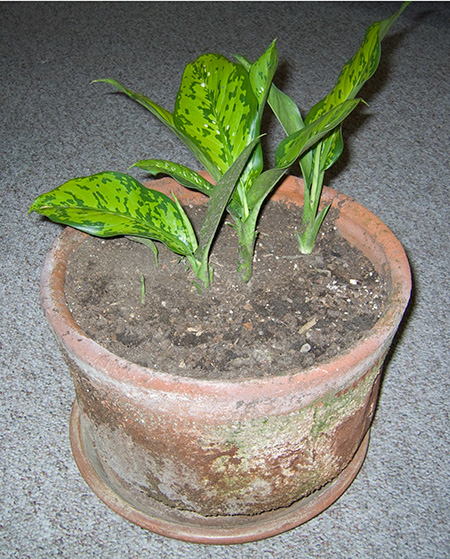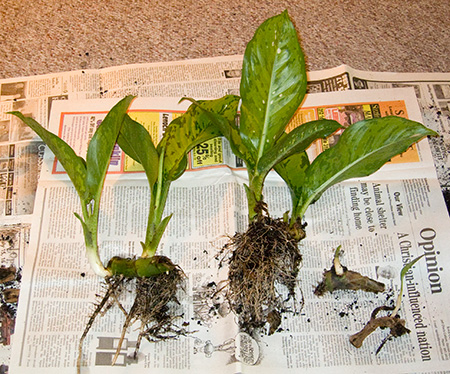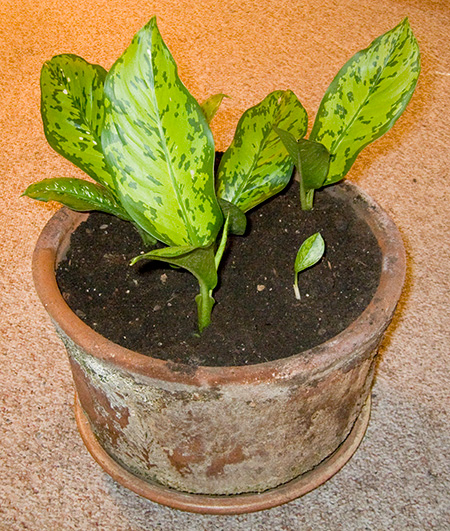I’ve previously written about my Dieffenbachia plant, I’m rather proud of it. It keeps getting overgrown, so it falls over and breaks off. Then I take cuttings and start all over again. Each new generation is a clone of the previous one. This plant could be immortal if I just kept cloning it forever. But it almost died out.
When I last wrote about my houseplant, it was Version 3.0. I had already started over two times, it was the third generation. A few months ago, it grew too tall and broke off again. I started Houseplant 4.0, but it was unsuccessful, it did not take root. Fortunately, I kept a backup of Houseplant 3.0. I kept one stalk of the broken plant growing, just in case 4.0 failed. And it did fail. So I cut the stalk into segments and buried them, to start new cuttings. Two of these segments almost completely failed, but two more were very successful. Here’s a picture of the plant after spending the summer growing outside on my deck.

But the plant is a mess. All the new shoots are crammed together in a row. If I leave them like that, they’ll crowd each other and break off easily. They need to be spread out around the pot, to make it look fuller and more attractive. So it is time to traumatize this plant by digging it all up, cutting it apart, and repotting it. This picture shows the cuttings after I carefully dug them up.

You can see two big stem segments with two new shoots, I can cut those apart so each shoot grows separately. In the lower right, there are two small shoots, that’s all that’s left of a couple of 6 inch long segments. They almost completely rotted away, but new little plants are just starting out. They’re several months of development behind the big shoots, but they’ll work well to fill out the plant once they get going. Here is the final result, after repotting. You can see one little leaf of a new shoot in the lower right.

In a month or two, this will all be filled out and much taller. It will eventually grow to about 5 or 6 feet, then fall over and break off again. Then I can start on Houseplant 6.0.
One of the reasons I like this dieffenbachia plant so much is the variegation. It has an interesting pattern of different intensities of green. Mathematician Alan Turing wrote extensively on the organizational structures of these patterns. He called the growth of these patterns “morphogenesis” and developed mathematical functions to describe their growth as a “reaction-diffusion” system. In more modern mathematical terms, we might describe these patterns as having been generated by cellular automata. These are essentially two different ways of viewing the same problem; Turing viewed it as an analog system, cellular automata are digital systems. But I prefer Turing’s system. I think cellular automata are a cheap trick, they’re for people who are too lazy to go to the trouble of understanding Turing’s math.
Wow this plant is like Bae Bae Kids; “We don’t die we multiply!” Your plant looks fantastic!!! Where can I get me a piece of this resurrection plant? I appreciate the bit about the mathematical study of this plant….very interesting.
[Dieffenbachia is a very common houseplant, you can buy one at nearly any greenhouse or florist. They are all variegated, but there are different strains, so be sure to find one with a nice pattern that you like. If you keep taking cuttings from the plant, theoretically it could live forever. –Charles]